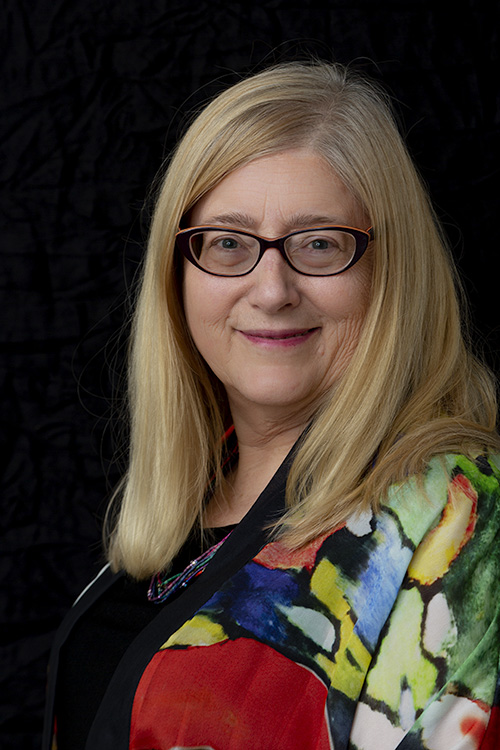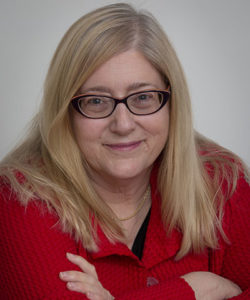The Power of Late Bloomers
The attempts to disempower an American woman unfold across her lifetime. She is sexualized as a young girl, loses her reproductive freedom as a young woman, takes on the “Second Shift” as a mother, and becomes invisible after menopause. Rendering women over fifty invisible is insidious because in reality age liberates us. Not only do we live longer than men, our healthspan is longer as well. Our energy is liberated as our children establish independent lives. And when our original careers wind down, we can devote ourselves to projects of our choosing. This period of life is a rich asset for each of us and for society.
But the time of our natural power is stigmatized. In the workplace and in the culture at large, women are judged more harshly for the appearance of aging. We are deemed sexless and irrelevant in ways that men of equivalent ages are not. And there’s another catch: If we dye our hair or take other steps to counter the visible signs, we are judged for that as well. Proposals to enact age limits on public service would add to gendered ageism because women’s opportunities to lead start later and, on average, our capacity for effective leadership extends later in life.
None of this is inevitable. We know that in some cultures older women are revered. We know from anthropology that older women’s roles in early human societies were essential to the development of human culture (see the Grandmother Hypothesis). And even today there are powerful older women leaders, including Nancy Pelosi, who began her political career after her children were grown.
A different view of older women is possible. What does it take to be visible and powerful as an older woman? It starts with each of us. We can claim our power, own our sexuality, and both radically define and accept our appearance. We can push back on our own internalized gendered ageism, countering ageist self-talk with positive messages. We can each intentionally build a public persona that serves us. We can and must give ourselves permission to claim our passions and our creativity.
What else can we do to empower ourselves and one another? How can we become powerful Late Bloomers?
Late Bloomers can take new initiatives in our own lives. The interests and passions we set aside to take on careers and raise children are still there, waiting for us. So are new avenues to explore. Giving ourselves permission to grow and change after midlife is the single biggest challenge to invisibility.
Late Bloomers can honor and build our collective power as Crones. We claim our agency not only individually but also through joining and supporting organizations such as these:
- The Grandmother Collective
- The Writers’ Lab
- The Centre for Aging Better
- Old School Anti-Ageism Clearinghouse
Each of us can learn about and support the efforts now underway, and look for new initiatives.
Late Bloomers can work for the empowerment of women across the lifespan.
The disempowerment of women is a lifelong problem that requires lifelong solutions and cooperation across all ages. Older women have the perspective to see the key role of agency across the full lives of women. We can:
- Support programs that empower children to set boundaries and say no.
- Support efforts to ensure reproductive justice for women.
- Support policies including parental leave and subsidized childcare that enable mothers to lead full lives.
- Support efforts to ensure economic justice for older women.
Late Bloomers can celebrate the shift already underway in American culture.
Our sheer numbers, our buying power, and our power to affect social policy are unlike anything in the history of older women. We are changemakers. A beautiful woman who is almost sixty, a woman who laughs, a woman who dances, is running for President and may well win. And women like Joan Price (Naked at Our Age), Julia Louise Dreyfus (Wiser than Me), and Geena Davis (The Geena Davis Institute) are making change happen every day. There are highly placed women in the sciences, in philanthropy, in education, shifting the direction of our culture.
At seventy I am more conscious of the need to construct a public persona. I am more likely to be talked over in public spaces. I have more empathy for women who are overlooked, who are caught up in the dominant narrative that older women are superfluous or nonexistent. I am also becoming more aware of the big picture: Of our sheer numbers, our buying power, our power to affect social policy. Our secret weapon is our mutual support.
We know that our stories, our representation matters. When Geena Davis acted the part of the president on television, acceptance of the idea of a woman president rose among the general public. So who stands to lose by keeping older women invisible? And who stands to gain as we claim our agency? Let’s keep asking these questions.
We older women have the perspective to see women’s disempowerment as a lifelong challenge to solve. The woman who cannot obtain reproductive healthcare today will age into the gray-haired woman who is overlooked. We can reach back and counter the several ways that society disempowers girls and women, including fighting for reproductive freedom. We are connected one to another in ways that were invisible before. We must make those connections ever more visible.



8 Responses
The energy and wisdom of the post-menopausal woman needs to be harnessed. Thanks for this!
Indeed, Betsy! You’re most welcome.
Indeed it does, Betsy!
And you are most welcome.
Inspirational as always. Thanks, Stella.
Love this post. You have a wonderful and informative newsletter. And congrats on your new book. Are you going to the NCWN fall conference? Would love to connect with you there if it works out.
Liz Solazzo
Thanks Elizabeth for your kind words.
I have another surgery and then radiation therapy coming up, so plans for the fall are uncertain. Will keep you posted!
We are powerful until the day we stop breathing!
Preach, Stella, preach!!! Thank you